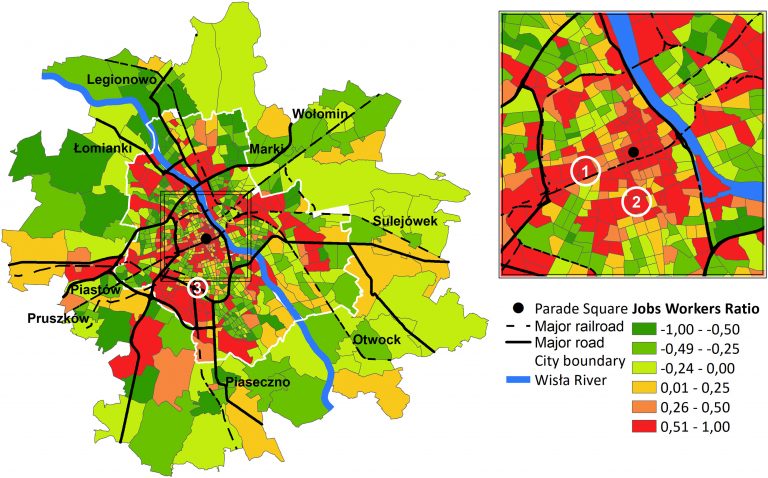
HU – Temporal dynamics of the impact of land use on modal disparity in commuting efficiency
Michal A. Niedzielski, Yujie Hu, Marcin Stepniak
Article first published online: 29 JUL 2020 Computers, Environment and Urban Systems
DOI: 10.1016/j.compenvurbsys.2020.101523
ABSTRACT: Urban land use is known to affect commuting efficiency according to the excess commuting framework. However, most studies do not include temporal dynamics, and those that do, focus on decadal, yearly, or daily temporal resolutions. However, commuting is not a stationary spatial process. Since people leave home and start their jobs at different times of the day and since traffic congestion varies throughout the day, neglecting hourly dynamics can misestimate commuting efficiency in a region and lead to erroneous policy implications. Another important issue often overlooked in the past is the modal disparity in commuting efficiency and how it evolves during the day. To overcome these limitations, this research examines the commuting efficiency variation by car and public transport by six one-hour periods between 5 AM and 11 AM in Warsaw, Poland, using travel survey data and travel times generated from GPS-based big data for cars and from GTFS for public transport. We develop four different groups of modeling scenarios: no disaggregation, disaggregation by time, disaggregation by mode, and disaggregation by time and mode. Therefore, excess commuting and modal disparity metrics are applied for a total of 21 specific time and mode combinations. The results suggest that commuting efficiency is worst during the 8–9 AM period for both modes, and that public transport users are more efficient after 7 AM. Hourly variations in the excess commuting metrics imply that policy makers should examine ways to encourage flexible work hours to distribute work starts and to increase public transport frequencies in the off-peak.
Read the full publication at Computers, Environment and Urban Systems